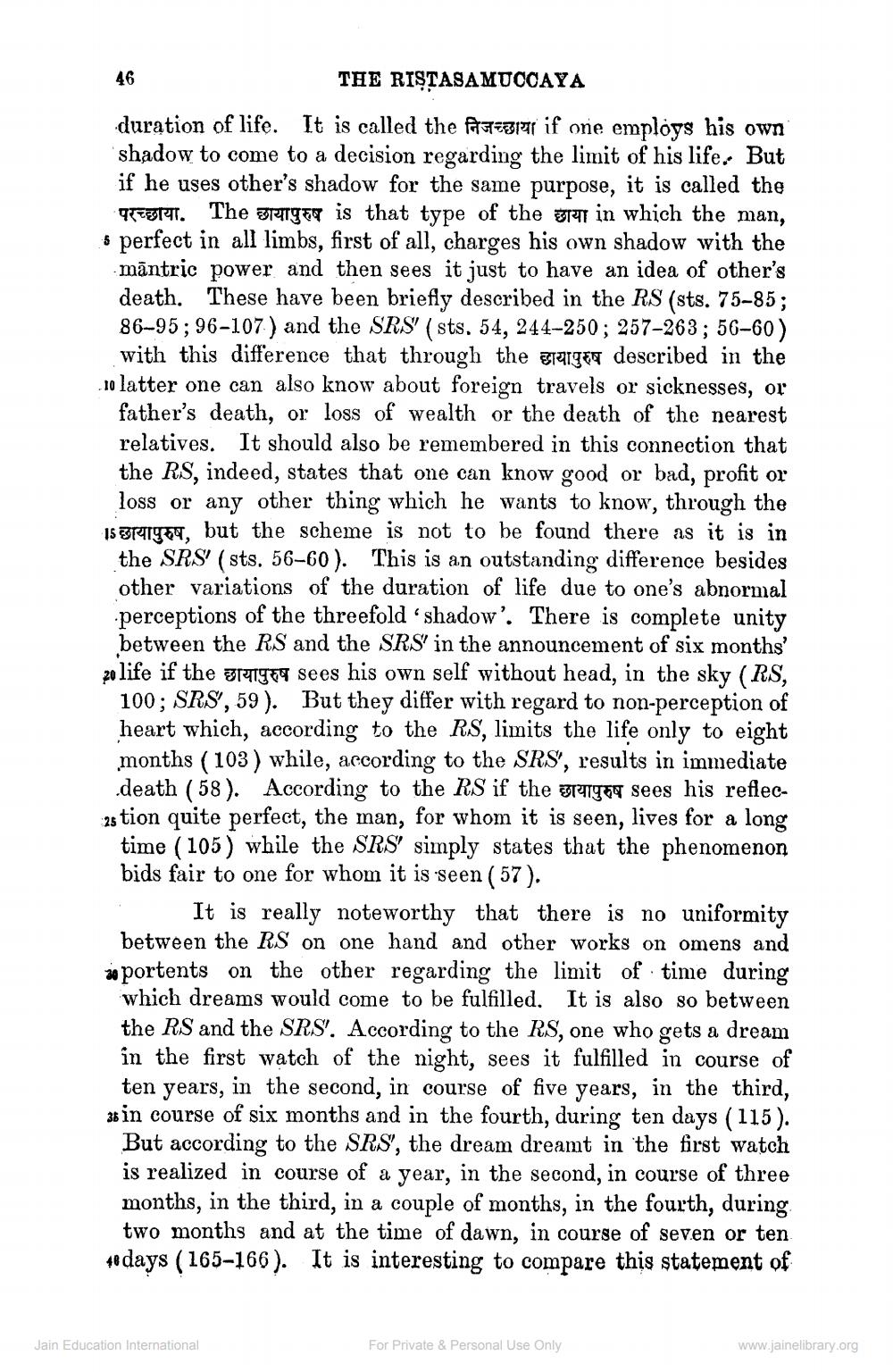________________
46
THE RISTASAMUCCAYA duration of life. It is called the feath if one employs his own shadow to come to a decision regarding the limit of his life. But if he uses other's shadow for the same purpose, it is called the
परच्छाया. The छायापुरुष is that type of the छाया in which the man, 6 perfect in all limbs, first of all, charges his own shadow with the māntric power and then sees it just to have an idea of other's death. These have been briefly described in the RS (sts. 75-85; 86-95; 96-107) and the SRS' (sts. 54, 244-250; 257-263; 56-60)
with this difference that through the ganger described in the 10 latter one can also know about foreign travels or sicknesses, or
father's death, or loss of wealth or the death of the nearest relatives. It should also be remembered in this connection that the RS, indeed, states that one can know good or bad, profit or
loss or any other thing which he wants to know, through the 15 grige, but the scheme is not to be found there as it is in
the SRS' (sts. 56-60). This is an outstanding difference besides other variations of the duration of life due to one's abnormal perceptions of the threefold shadow'. There is complete unity between the RS and the SRS' in the announcement of six months' zo life if the graigta sees his own self without head, in the sky (RS,
100; SRS, 59). But they differ with regard to non-perception of heart which, according to the RS, limits the life only to eight months (103) while, according to the SRS, results in immediate death (58). According to the RS if the mau sees his reflec25 tion quite perfect, the man, for whom it is seen, lives for a long time (105) while the SRS simply states that the phenomenon bids fair to one for whom it is seen ( 57).
It is really noteworthy that there is no uniformity between the RS on one hand and other works on omens and wo portents on the other regarding the limit of time during
which dreams would come to be fulfilled. It is also so between the RS and the SRS'. According to the RS, one who gets a dream in the first watch of the night, sees it fulfilled in course of ten years, in the second, in course of five years, in the third, 3: in course of six months and in the fourth, during ten days (115).
But according to the SRS', the dream dreamt in the first watch is realized in course of a year, in the second, in course of three months, in the third, in a couple of months, in the fourth, during
two months and at the time of dawn, in course of seven or ten 4 days (165–166). It is interesting to compare this statement of
Jain Education International
For Private & Personal Use Only
www.jainelibrary.org




